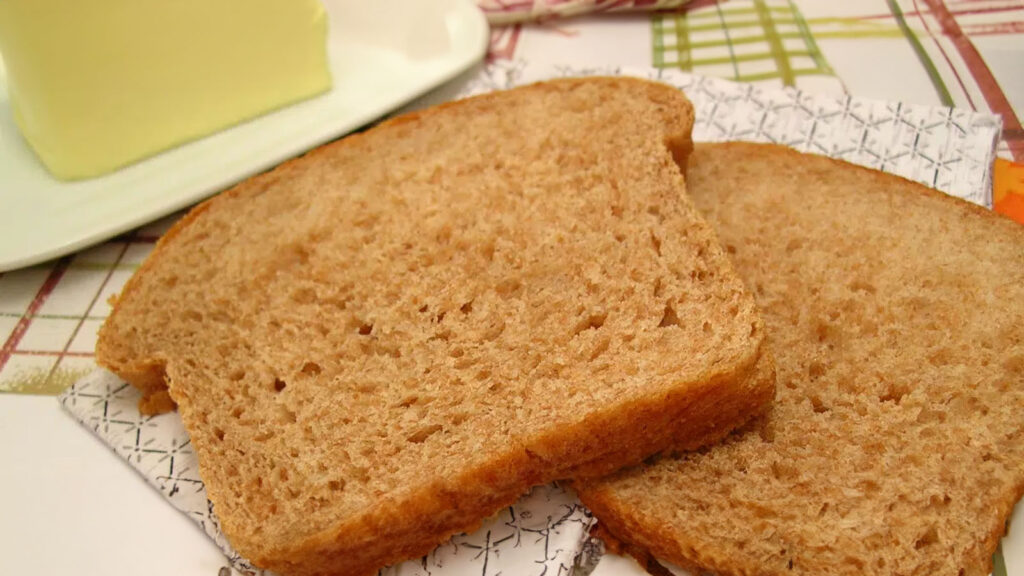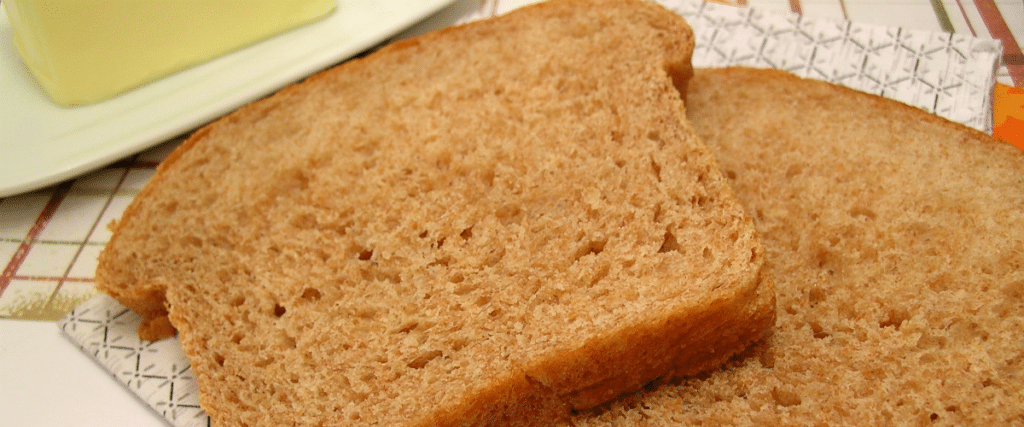
We’re teaming up with 1840 Farm to bring you The Bread Baker’s Series.
We thought it would be appropriate to begin the series with tips to make the perfect loaf of 100% whole wheat bread. Keep in mind that these tips can also be used with many other types of bread.
First of all, we’ll direct you to our 100% whole wheat bread recipe. There are tips and tricks in that post as well.
Now, onto the common issues that are keeping you from making your perfect loaf of 100% whole wheat bread!

 This could be the result of old yeast that has lost its oomph.
This could be the result of old yeast that has lost its oomph.
But more than likely it has something to do with the gluten. It’s possible that the dough wasn’t kneaded enough to fully develop the gluten. If the gluten isn’t developed, the dough won’t stretch to hold the gas pockets that the yeast creates.
Dense bread could also be the result of not enough gluten. Not all wheat is created equal. Aim for wheat that is 14%-16% protein (protein = gluten). However, if your wheat falls short of this mark or you just want your bread lighter, add 1-4 tablespoons of vital wheat gluten.
Another possibility is that your bread didn’t rise long enough. A 1 and 1/2 pound loaf should rise to about one inch above the top of the pan.
Another less common possibility could be that there is too much salt. Salt helps control the yeast’s rising action. Too much salt could halt the rising.
Dense, but not so flat bread can come from too much dough in the pan. It may look fully risen just because of the amount of dough in the pan when it really isn’t. Aim for 1 1/2 pounds of dough for a medium loaf pan.
This can happen when your bread rises too high before you put it in the oven. Again, aim to put your bread in the oven when it has risen to about one inch above the top of the pan.
Bread can also fall if the bread dough is too light. Add a little more flour.
Bread can also rise too high if there’s not enough salt. Salt controls the yeast action as well as adding flavor.
Another cause of fallen bread could be too much dough for the pan. 1 1/2 pounds of dough should go in a medium loaf pan.
This one has been and continues to be a puzzlement for us. It’s possible that this happens when the bread rises too high, but before it has a chance to fall, the crust bakes enough to remain standing and the interior falls a little.
Oven spring is that unsightly, torn appearance usually on one side of the top crust. This happens when the loaf hasn’t quite risen enough. When it’s put in a hot oven, the yeast is forced to rise too quickly and ends up tearing the dough.
There are a couple ways to prevent this. You can be sure that the dough has risen enough, which takes practice.
A more fool-proof way to prevent oven spring is to put your loaf into a cold oven when it has risen just to the top of the pan. Then, turn the oven on. The oven heats up gradually, allowing the bread time to finish rising fully before the oven is up to temperature.
Another thing that might help is to keep the top of the bread from drying out while it’s rising. If it dries out, it won’t stretch and is more vulnerable to tearing. Brush-melted butter on the top of the dough after you put it in the pan. This will also create a super soft top crust after the bread is cool.
A baked loaf of bread becomes crumbly when the dough isn’t kneaded enough to develop the gluten. Fully developed gluten produces elasticity.
If the gluten is fully developed and your loaf still turns out crumbly, the wheat may not have enough protein (below 14%). Add 1-4 tablespoons of vital wheat gluten.
Contrary to popular belief, bread usually ends up tasting yeasty when the water is too hot, not when too much yeast has been added. It takes a lot of yeast to produce a yeasty flavor on its own.
Keep in mind that there are so many different factors that affect bread. You may produce a perfect loaf for months, then all of a sudden, something goes wrong. It could be the barometric pressure, the humidity, the temperature, or any number of other things.
With lots of practice and trial-and-error, you’ll get it and be able to compensate where needed depending on outside factors.
If you have a question that we didn’t cover, please feel free to ask in the comments section below or on our Facebook page.
The Bread Baker’s Series is a creative collaboration between Kitchen Kneads and 1840 Farm. To be sure that you don’t miss out on any of the posts in this series, subscribe to our email, or follow us on Facebook or Pinterest. You can also become a member of the 1840 Farm community via email, Facebook, Twitter, or Pinterest.
Save
Save


Kitchen Kneads is your one-stop shop for quality grains, flour, kitchen appliances, and other ingredients.
We are Utah’s premier baking and cooking resource!
Questions?


Kitchen Kneads is your one stop shop for quality grains, flour, kitchen appliances and other ingredients. We are Utah’s premiere baking and cooking resource! Questions?
888-881-9957
info@kitchenkneads.com
2022 | Kitchen Kneads | All Rights Reserved | Privacy Policy | Terms | XML Sitemap | Site by PDM